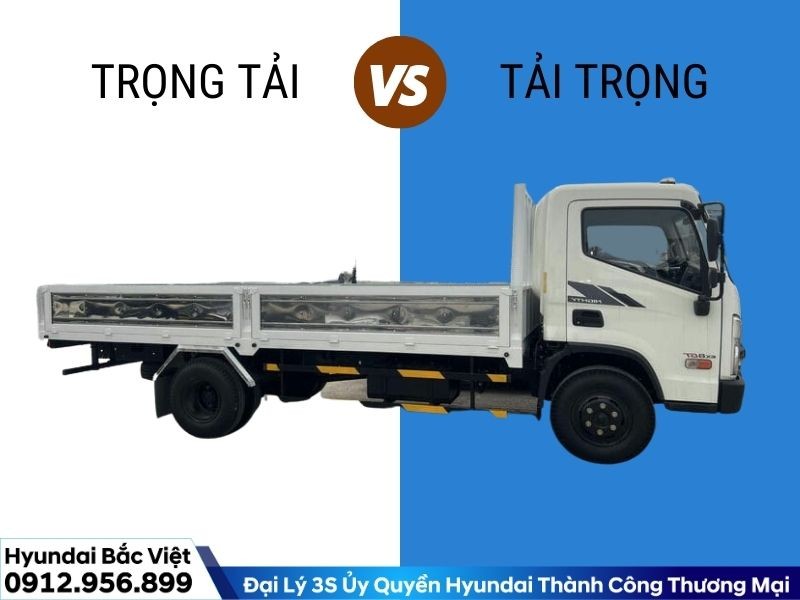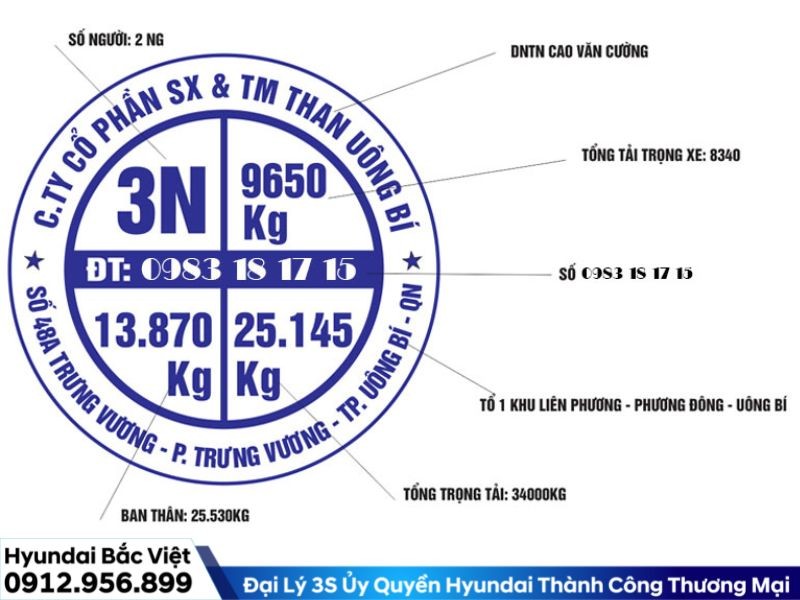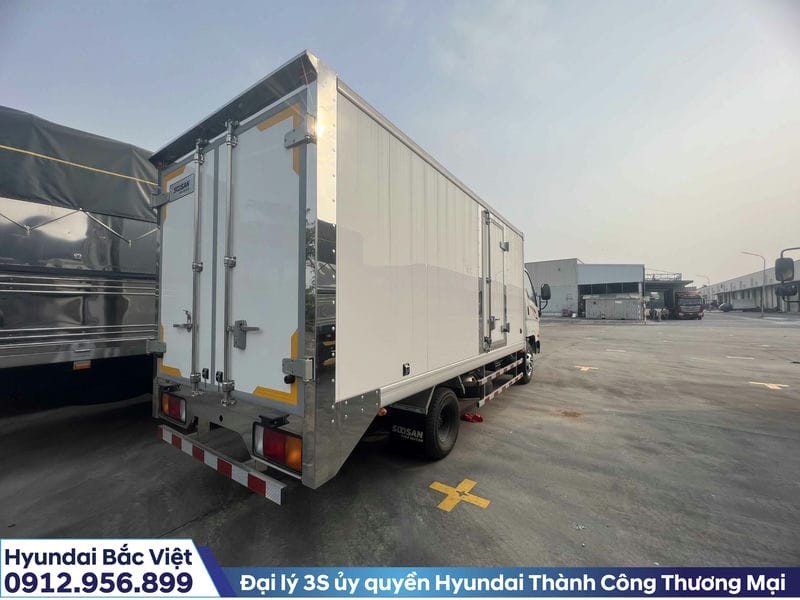Truck payload is a crucial factor to consider when choosing a truck. It directly impacts transport capacity, operating costs, and legal compliance. So, what exactly is truck payload? How do you choose the right payload? This article will answer all your questions about this important specification.
 Truck payload specification sign on a vehicle
Truck payload specification sign on a vehicle
What is Truck Payload?
Truck payload is defined as the total weight of goods permitted to be carried, including passengers. This specification is clearly stated in the Certificate of Technical Safety and Environmental Protection Inspection for motor vehicles (Clause 9, Article 3 of Circular 31/2019/TT-BGTVT).
Decree 10/2020/ND-CP further clarifies this concept, distinguishing between design payload and permissible payload:
- Design Payload: The maximum weight of goods and number of people the vehicle is permitted to carry according to the manufacturer’s specifications.
- Permissible Payload: The maximum weight of goods and number of people the vehicle is permitted to carry when operating on roads, not exceeding the design payload.
Payload specifications are published and clearly stated in the Vehicle Factory Quality Inspection Certificate.
Distinguishing Payload and Curb Weight
Many people often confuse payload and curb weight. However, these are two completely different specifications:
- Payload: The actual weight of goods the truck carries, excluding the weight of the vehicle and passengers.
- Curb Weight: The weight of the vehicle when it is not carrying goods or passengers.
 Diagram comparing payload and curb weight in a truck
Diagram comparing payload and curb weight in a truck
In summary:
- Gross Vehicle Weight (GVW): The maximum total weight of the vehicle and goods allowed.
- Payload: The actual weight of goods being carried.
Other Weight Specifications
In addition to payload and curb weight, there are several other definitions related to truck weight:
- Net Weight: The weight of the vehicle when it is empty of cargo.
- Gross Weight: The weight of the vehicle together with cargo and other items on board.
- Towing Weight: The maximum weight a vehicle can tow.
- Payload: The weight of cargo that a vehicle can carry, calculated as gross weight minus net weight.
 Close-up of a truck's label showing weight specifications
Close-up of a truck's label showing weight specifications
Penalties for Overloading
Carrying loads exceeding the permissible payload is a violation of the law, endangering traffic safety and affecting the lifespan of the vehicle. Penalties are stipulated in Decrees 100/2019/ND-CP and 123/2021/ND-CP, depending on the extent of overloading and apply to both drivers and vehicle owners. Fines range from VND 800,000 to VND 20 million, along with additional penalties such as license suspension.
Truck Payload Classification
Trucks are classified into 3 types based on payload:
- Light Trucks: Payload under 5 tons.
- Medium Trucks: Payload from 5 to 15 tons.
- Heavy Trucks: Payload over 15 tons.
Choosing the Right Payload
Choosing the right truck payload specification to match transportation needs is crucial. It is necessary to determine the volume of goods frequently transported and calculate the truck’s payload, including the driver and fuel.
 Hyundai N205SL refrigerated truck, example of a truck for specific payload needs
Hyundai N205SL refrigerated truck, example of a truck for specific payload needs
Note:
- Avoid choosing a truck with a payload that is too large or too small for your needs.
- Allow for some payload capacity for unforeseen circumstances.
- Consult with sales staff for advice on choosing the most suitable truck.
Conclusion
Truck payload specification is a key factor determining transportation efficiency and legal compliance. Understanding payload, curb weight, and related regulations will help you choose the most suitable vehicle for your needs, optimize costs, and ensure traffic safety.